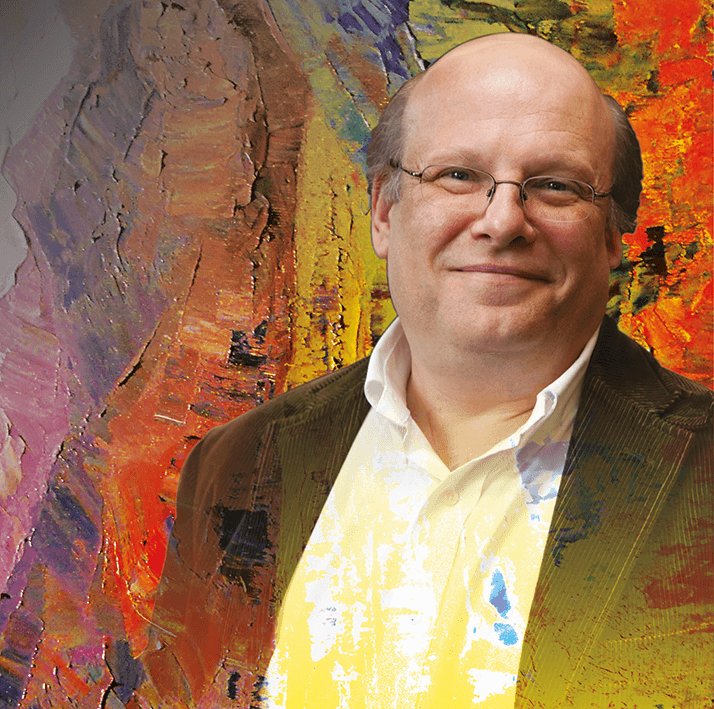
How did you find yourself imaging masterpieces of art? I was actually doing biophysics at graduate school when I had a conversation with a student who was trying to help a conservator image a painting with a vidicon tube with little success. I was experienced in fast spectroscopy and had some knowledge of infrared imaging so I offered to help. I quickly realized that the technology being used was very much out of date – this was back in 1990 – so we decided to build a mockup system with a single diode detector and worked with the conservator to find the right spectral range by scanning test panels. At the same time, new solid-state imaging arrays were coming into use, and I figured they would be perfect for our needs. We convinced Kodak to modify one of its camera systems to work in our spectral range and it worked like a charm! In fact, the results were so great that the research camera was donated to the gallery despite its rather significant cost.
And you were hooked? Right. That got me hooked for life. Throughout my postgraduate studies and beyond (I worked in the aerospace industry for about 9 years), I found myself consulting more and more for different museums and galleries. I got into multispectral imaging and moved onto using reflectance spectra to analyze art materials with Jack Salisbury’s group at Johns Hopkins University – Jack is one of the pioneers of measuring material reflectance spectra. In particular, we were interested in pigment identification. We leapfrogged off work from the geophysics community, who were using airborne hyperspectral cameras to search for rocks and minerals – that’s got to be more efficient than a geologist with a Munsell color chart and a pickaxe!
Can you walk us through the main technological advances in art analysis? Actually, much of the progress seen in the art analysis community echoes advances in the biomedical and material science fields. Good examples include scanning electron microscopy (and its dispersive capabilities), HPLC and MALDI, all of which have been exploited by the community. The concept of scanning a whole painting to gain a general characterization has been developing since the early 2000s. Multispectral reflectance imaging is now commonly used and scanning x-ray florescence (XRF) is proving to be invaluable; working with these two different imaging modalities has been extraordinarily helpful in the last couple of years.
What does a good day at work entail for you? On a good day, I’ll be discussing a project with a conservator or art historian. Usually, they will have drawn some inferences about modifications made to the painting and the compositional elements used in terms of pigments. With that information in mind, I hit the lab and start collecting data. But the really fun part is the data exploitation, looking at the maps and making sense of chemical patterns. Finally, I share my conclusions with the conservator and gain their insight. It’s an iterative and interdisciplinary process. That’s clearly more than one day’s work – but you get the picture (no pun intended)!
What’s the most exciting piece of art that you’ve worked on? Well, the Pablo Picasso ‘Blue Period’ paintings are rather fascinating in terms of the amount of change that he makes and how quickly the paintings are executed. However, the paintings by Jan van Eyck are unbelievably spectacular in both the final composition and the underdrawings. It always fascinates me that such painters often deviate substantially from very elaborate underdrawings in the final form. Those in our field (especially the scientists) are often looking for the technical ‘hook’ that allowed the creation of such a phenomenal piece of work. I get the feeling that these artists knew exactly what they were doing – it is raw proof of their tremendous ability
Which is most rewarding – the science or the art? Conservators ask basic questions of very complex, layered materials – it’s my job to address those questions using the analytical techniques at my disposal. Meeting that often substantial intellectual challenge is the most rewarding part for me. The artwork is very often breathtaking and beautiful, but I’m a scientist at heart!
Are you artistically inclined? Many of the people who I work with do paint, draw or do photography – and I can see the desire to get involved. However, I’m satisfied with being an avid appreciator. From that perspective, I find it intriguing that when you spend several weeks with an abstract painting (for example, a piece from Picasso’s synthetic cubism period), you start to realize what’s so amazing about it, slowly growing to love and understand something you may not have initially liked.
Where is art analysis heading? We have a lot of single-point analysis methods that work very efficiently, from reflectance spectra to XRF to x-ray diffraction. How best to fuse those datasets spatially and come up with something that doesn’t end up with three PhD students arguing over data they all know very well? That’s the next big thing.




